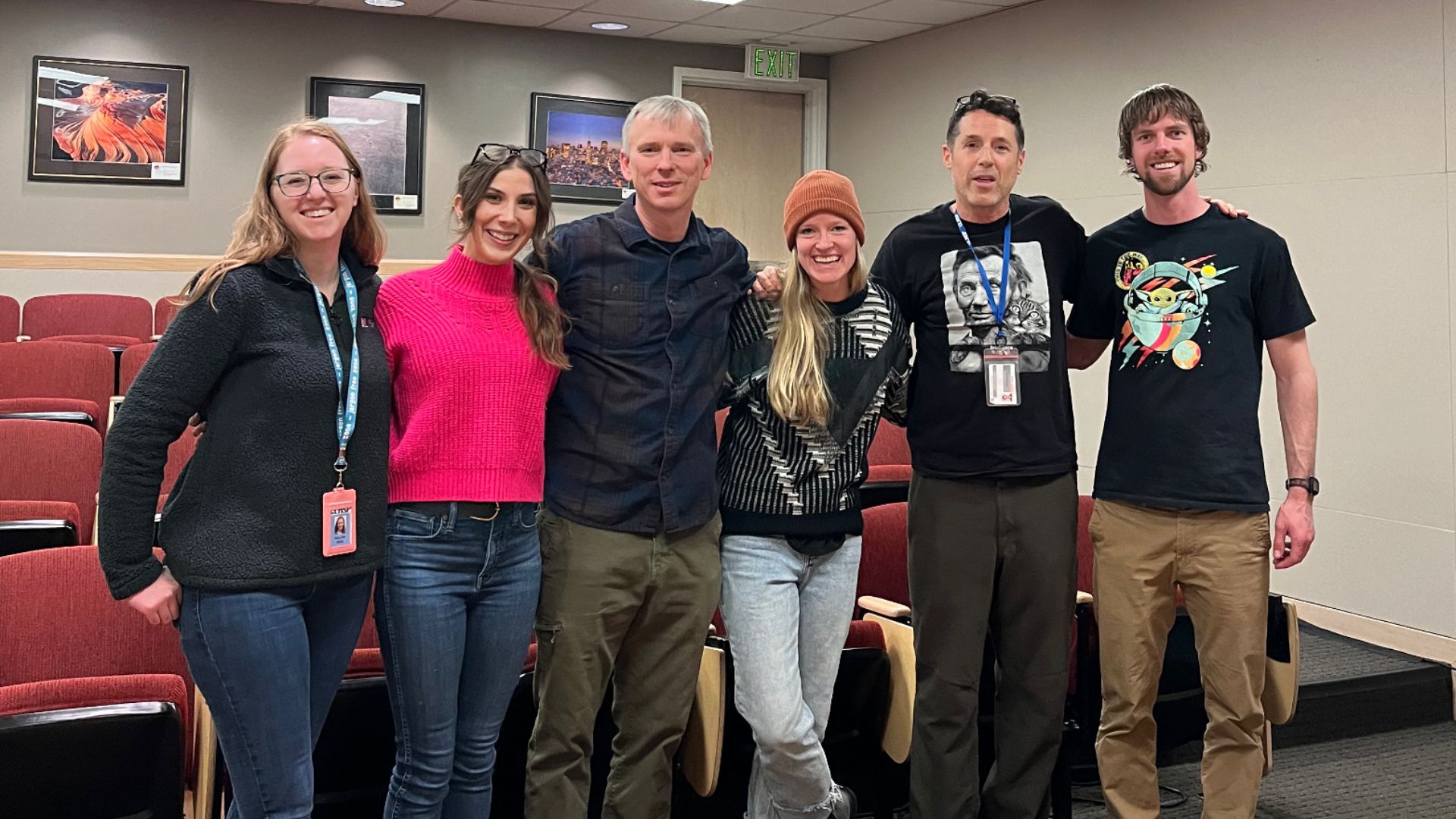
What connects art and science? This was the question posed to several elementary school classes when they recently visited the Laboratory for Atmospheric and Space Physics at the University of Colorado Boulder to participate in Empty Space: A LASP Artist in Residence Program. The answer, the students learned, is creative thinking.
In October, three artists, Mario Miguel Echevarria, Alexandra Lockhart, and Clark Riley, were selected to participate in the program, which is sponsored by LASP and the CU President’s Teaching Scholars Program through the Timmerhaus Fund. The six-month program enables the artists to learn about the exciting space science research and innovative engineering happening at LASP, incorporate it into their art, and help students learn about the connection between art and science.
In January, the artists and scientists hosted third and fourth grade classes from Rocky Mountain Elementary in Westminster, Colorado, and Foothills Elementary in Boulder, Colorado, took field trips to LASP, where they engaged in several activities that showed how science and art can interact. The students toured the lab, saw how and where spacecraft instruments are made, and spoke with CU Boulder undergraduate students about what it is like to study space science and work at LASP.
The artists led the students through different art exercises that encouraged them to use creative thinking. The activities—based on the artists’ own respective mediums, including dance, painting, and poetry—included choreographing dances based on planetary trajectories through the solar system and writing poems based on the Sun. Through the art exercises, the students not only learned about the lab’s expertise, but also how important creative thinking is in science.
“During these engaging interactions with the students, the incredible power and importance of imagination was very apparent,” artist Lockhart explained. “The students seamlessly exhibited that creativity and curiosity. The desire for exploration is innate. A beautiful reminder!”
Several pieces of the students’ artwork will be featured in an upcoming exhibit at the Boulder Public Library’s Canyon Gallery. The exhibit will open on Saturday, Feb. 10, from 2-4 p.m., and run through the end of March. Opening day dance performances and in-person science talks will be held from 2:30-3:30 p.m. Further performances and talks will be held on two Saturdays, Feb. 24 and Mar. 9, from 2:30-3:30 p.m.
By Willow Reed, Senior Communications Specialist
Founded a decade before NASA, the Laboratory for Atmospheric and Space Physics at the University of Colorado Boulder is on a mission to transform human understanding of the cosmos by pioneering new technologies and approaches to space science. LASP is the only academic research institute in the world to have sent instruments to every planet in our solar system. LASP began celebrating its 75th anniversary in April 2023.



